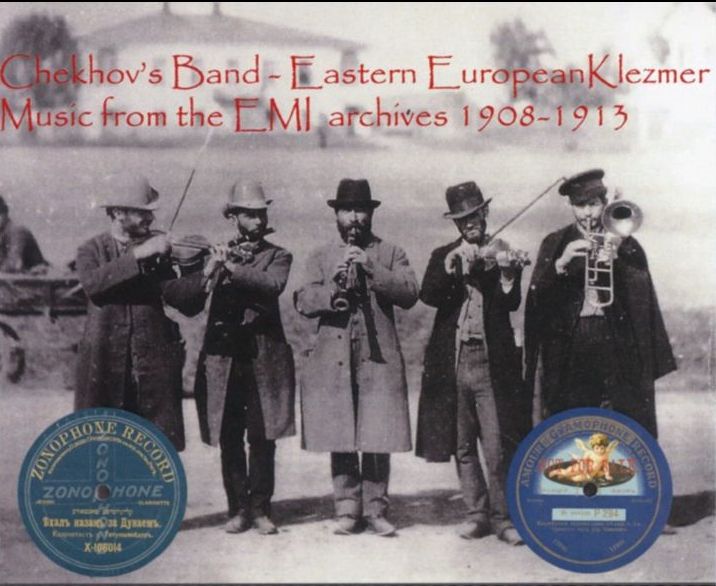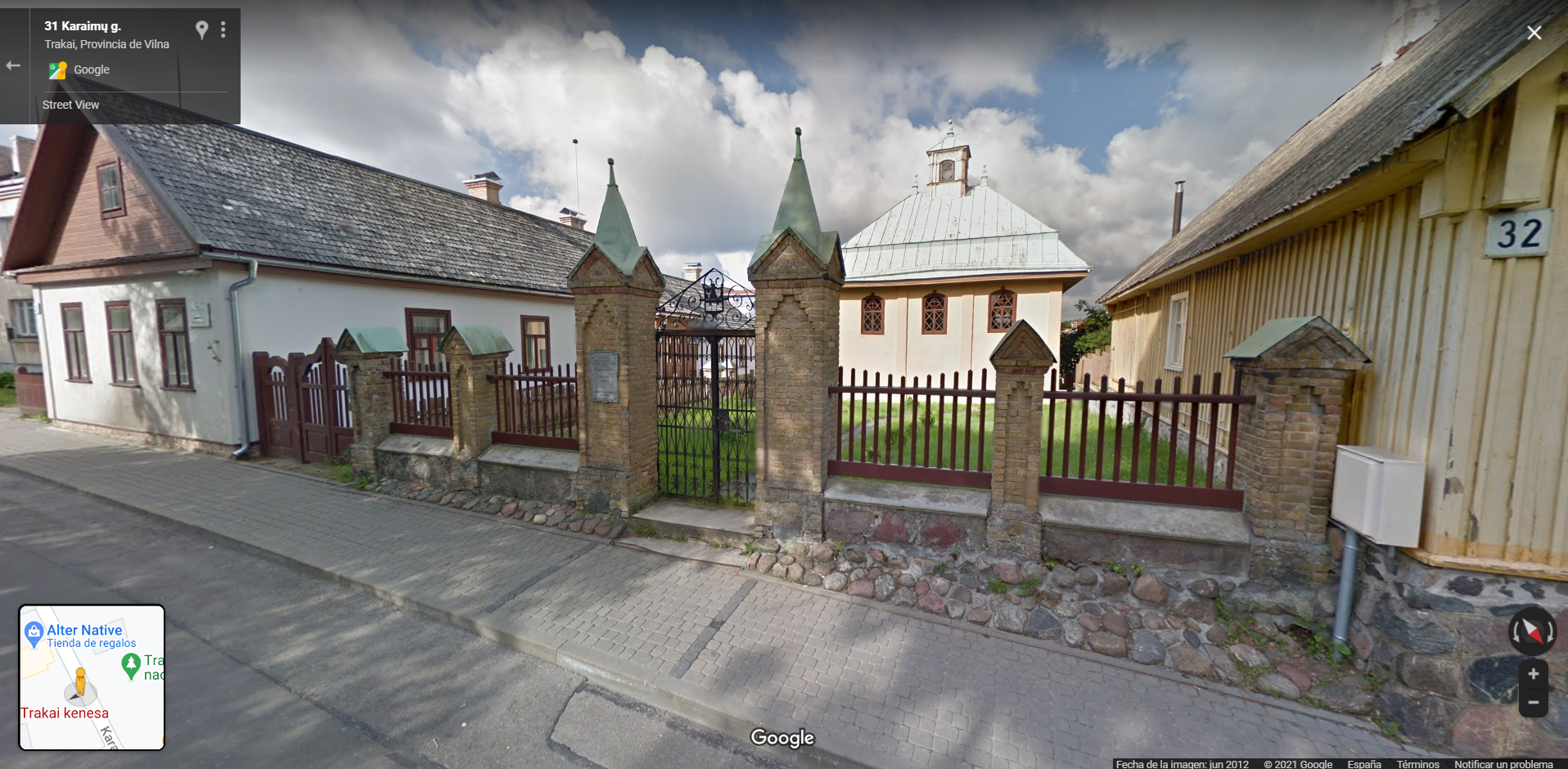5th February 2021 – Shabbat is almost here
And today we’ll get into the mood with a recording of a piece of klezmer from before World War I, by the Stupel’s Vilna Orchestra
 Hello, how are you? I hope very well. For some time I have been very curious about the Karaites. I usually wander on Youtube searching for music and I found the piece we will listen to today, that is called “Karaite Medley”. This finding has led me to a bunch of more wonders to feed future Music Before Shabbat’s editions.
Hello, how are you? I hope very well. For some time I have been very curious about the Karaites. I usually wander on Youtube searching for music and I found the piece we will listen to today, that is called “Karaite Medley”. This finding has led me to a bunch of more wonders to feed future Music Before Shabbat’s editions.
But now, enjoy this delight, older that one century!
– And, as usual, find the music piece at the bottom – ?
Share the joy of music and learning with your beloved ones. Share MBS. Thank you in advance.
| Share this with a friend, right from here |
About the recording from the EMI Archive
The featured recording is called Karaite Medley, played by the Stupel’s Vilna Orchestra and it is included in the album “Chekhov’s band: Eastern European klezmer music from the EMI archives, 1908-1913.”. I have just ordered that album and other three from the label Renair Records from the online shop of Honest Jons, so I will have very inspiring material to share with you in the near future. So, what is that “Stupel” from Vilna? What are the EMI archives? And what does “Karaite” mean? Let’s try to answer all these questions!
What are the EMI archives
The EMI Archive Trust is a registered charity, supported by Universal Music Group. Their website is this and they say about themselves that it was established in 1996. The EMI Group of companies gifted much of their assets which originated before 1947 to the trust. In most of the world, the copyright of the recording expires after 50 years of the year in which the recording was made. That’s why there is a lot of wonderful music recorded so long ago available in Youtube, shared by individuals, without copyright infringement.Their collections are available, on site in London, to academics, discographers, researchers, their institutional partners and the general public upon request.Last November, the EMI Archive Trust launched the album “Eastern Mediterranean Judeo-Spanish Songs from the EMI Archive Trust (1907-1912)” so I think they deserve mention and thanks for disseminating these recordings of enormous value.

What is that “Stupel’s Vilna Orchestra”?
The picture above is the cover of the album in which the piece is included. There is not a “Chekhov’s band” that plays in the album. The title is inspired by a phrase from a character of a work by Anton Checkhov, Gayev, in The Cherry Orchard: “Our famous, Jewish orchestra, you remember, four violins, a flute and a double bass”.The compilation provides an idea of the pre-first world war Eastern European klezmer band could sound, before that many musicians moved to the USA, where they made recordings that have reached us widely, like the ones by Naftule Brandwein (check the edition of MBS about him, here). The one that is playing in the piece is the Stupel’s Vilna Orchestra.

This picture is from the website of the Jewish Virtual Library, in the page about the Kovno Guetto Orchestra. I recommend you to read the complete post and as a summary, let me explain that Alexander Stupel, the man standing on the right with the violin, was the concertmaster Alexander Stupel and he was part of the orchestra of the Kovno (Lithuania) Guetto, that started in 1942, in a period called “Quiet Period” for the guetto. Before that, many intellectuals had been killed and the musicians were converted into policemen to save their lives. Alexander died later, in Dachau in 1944. Other people in his family were musicians too. His brother Boris survived Dachau and emigrated to Australia.
I am not sure about who put the name to the “Stupel’s Vilna Orchestra”. The fact that it was a person of this family is right now just an hypothesis, but a very reliable one. I have ordered the album so I hope I will be able to find out if it is right when it reaches my hands, as it seems to contain a booklet with a lot of information. There are more details about the family on this page, Eilat Gordin Levitan.
Moreover, on this page of the website of the United States Holocaust Memorial Museum:
“The Stupels were a family of noted Lithuanian musicians. Dmitri (Meir) Stupel (b. 1860) served as the conductor of the Vilna Symphony, and his wife, Maria (Miriam) Antakolsky Stupel (b. 1870) was the daughter of a famous Jewish sculptor. They had three boys, Alexander (Sasha or Shmaya, b. 1900), Gregory (Grisha) and Boris (Abraham or Abrasha) and two girls, Mania and Sonia (b. 1906), most of whom trained in Germany and also became professional, well-regarded musicians. After the Polish re-occupation of Vilnius following World War I, the family moved to Kaunas. Alexander, the oldest son, was an excellent violinist and performed with the Kaunas Symphony. The second son Gregory was a pianist. He studied music in Leipzig, Germany, and married Esther Lan. Her father, a wealthy businessman, was also director of the Jewish Theater in Kaunas. Gregory played in the Jewish Theater, which was run by his father-in-law Gabriel Lan. Boris also studied violin in Germany and married a German woman. At some point he returned to Kaunas and became imprisoned in the Kovno ghetto.”
The history of the Lithuanian Jews will be the focus in future MBS editions.

And what do the Karaites have to do with all this?
The musical piece is called Karaite Medley. The first time I heard about the Karaites was in reference to them as an ethnic minority in Poland. The Karaites have had a special presence in Poland, Ukraine and Lithuania. They don’t consider themselves as Jews.
The main difference in terms of faith is that the Karaites are expected to understand the Old Testament by him/herself, so there is no reason to have commentaries to the Tanakh.
Their origin is traced in Iraq in the 8th century. They are connected to the Turkic ethnicity. The Nazi Germany considered the Karaites as not Jews. This saved their lives. The Karaites don’t have “synagogue”, but “kenessa”. And there is one in Trakai and one in Vilnius. This picture, from this source, is the second one.
Do you want to learn a bit more about Karaites?
- This 5 minutes documentary is quite nice.
- The website Culture.pl (the absolutely outstanding website by the Adam Mickiewicz Institute) talks here about the Karaites, their background and present.
It is always sunny on Google maps. This is the kenessa in Trakai. Click to make a visit to this charming location.

| Share this with a friend, right from here |
And the music piece!
Click the picture to listen to the Karaite Medley:
Shabbat Shalom.
Araceli Tzigane | Mapamundi Música
And we share with you one hour of music for joy in this playlist.
To know more about our artists, click here.
May you always find the light in your path.
These is our artistic offer for live show:
Gulaza – Janusz Prusinowski Kompania Jewish Memory
